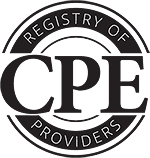A code of conduct is a vital organizational document. Breaches of ethics can land companies in serious trouble with consumers, other organizations or government authorities. Creating a code of conduct makes decision making easier at all levels of an organization. It reduces ambiguity and considerations of individual perspectives in ethical standards.
Code of conduct examples are easily found by searching the web. They extend from organization codes to professional codes. The biggest mistake any corporation can make is to replicate someone else’s code. These are the exact reasons we spent time going over the History of Ethics and the Psychology Behind Ethics.
A strong code of conduct must be established with the specific organization or profession in mind. Enron’s code of conduct is often touted as a strongly written code. How much good did it do them?
This course focuses on important concepts professionals should know and understand about codes of conduct.
Prerequisites
No Advanced Preparation or Prerequisites are needed for this course, but completion of the instructor's other courses on ethics may be helpful.
Learning Objective
• Explore reasons behind establishing a code of conduct.
• Identify important concepts for adequate codes.
• Recognize the benefits of codes of conduct.
• Explore model codes and examine how they link to ethical theories.
• Identify important code components.
• Identify how to develop your code.
• Explore how to personalize your code.
Last updated/reviewed: July 16, 2025
(0) Reviews
(189 rating)Lesson Questions and Answers0 Questions
Progress
INTRODUCTION AND OVERVIEW
KEY TO AN EFFECTIVE CODE OF CONDUCT
- Types of Codes 6:29
- Purpose Behind the Code of Conduct 14:27
- Important Aspects for Codes 11:55
- Benefits of Code of Conduct 11:21
- Model Codes Part 1 11:31
- Model Codes Part 2 8:13
- Develop Your Code 12:02
- Personalize Your Code 5:03
CONCLUSION
- Summary 2:09
CONTINUOUS PLAY
SUPPORTING MATERIALS
- Slides: Key to an Effective Code of Conduct PDF
- Key to an Effective Code of Conduct Glossary/Index PDF
REVIEW AND TEST
- REVIEW QUESTIONS quiz
- FINAL EXAM exam
Keys to an Effective Code of Conduct
Certified Public Accountant
Online
No advanced preparation or prerequisites are required for this course.

NASBA Sponsor Number: 109504
State of New York Sponsor Number: 002746
State of Texas Sponsor Number: 009890
Chartered Accountant (IES8 CPD)
Online
Certified Management Accountant
Online
No advanced preparation or prerequisites are required for this course.
Certified Fraud Examiner
Online
No advanced preparation or prerequisites are required for this course.
Certified Government Financial Manager
Online
No advanced preparation or prerequisites are required for this course.
Certified Internal Auditor
Online
No advanced preparation or prerequisites are required for this course.

Recognized CPE provider, authorized by the Institute of Internal Auditors for use in the Certified Internal Auditor (CIA) CPE program.
Certification in Risk Management Assurance
Online
No advanced preparation or prerequisites are required for this course.

Recognized CPE provider, authorized by the Institute of Internal Auditors for use in the Certified Risk Management Assurance (CRMA) CPE program.
Society for Human Resource Management Certified Professional
Online
No advanced preparation or prerequisites are required for this course.

Illumeo is recognized by SHRM to offer Professional Development Credits (PDCs) for the SHRM-CP℠. This program is valid for 1.5 PDCs for the SHRM-CP℠. For more information about certification or recertification, please visit www.shrmcertification.org.
Society for Human Resource Management Senior Certified Professional
Online
No advanced preparation or prerequisites are required for this course.

Illumeo is recognized by SHRM to offer Professional Development Credits (PDCs) for the SHRM-SCP℠. This program is valid for 1.5 PDCs for the SHRM-SCP℠. For more information about certification or recertification, please visit www.shrmcertification.org.
Professional in Human Resources
Online
No advanced preparation or prerequisites are required for this course.

The use of this seal confirms that this activity has met HR Certification Institute’s® (HRCI®) criteria for recertification credit pre-approval.
Senior Professional in Human Resources
Online
No advanced preparation or prerequisites are required for this course.
 | This activity, ID No. 000000 has been approved for 1.0 HR (General) recertification credit hours toward aPHR™, PHR®, PHRca®, SPHR®, GPHR®, PHRi™ and SPHRi™ recertification through HR Certification Institute® (HRCI®). Please make note of the activity ID number on your recertification application form. For more information about certification or recertification, please visit the HR Certification Institute website at www.hrci.org. |

The use of this seal confirms that this activity has met HR Certification Institute’s® (HRCI®) criteria for recertification credit pre-approval.
Global Professional in Human Resources
Online
No advanced preparation or prerequisites are required for this course.

The use of this seal confirms that this activity has met HR Certification Institute’s® (HRCI®) criteria for recertification credit pre-approval.
Associate Professional in Human Resources
Online
No advanced preparation or prerequisites are required for this course.

The use of this seal confirms that this activity has met HR Certification Institute’s® (HRCI®) criteria for recertification credit pre-approval.
Professional in Human Resources – California
Online
No advanced preparation or prerequisites are required for this course.

The use of this seal confirms that this activity has met HR Certification Institute’s® (HRCI®) criteria for recertification credit pre-approval.
Professional in Human Resources - International
Online
No advanced preparation or prerequisites are required for this course.

The use of this seal confirms that this activity has met HR Certification Institute’s® (HRCI®) criteria for recertification credit pre-approval.
Senior Professional in Human Resources - International
Online
No advanced preparation or prerequisites are required for this course.

The use of this seal confirms that this activity has met HR Certification Institute’s® (HRCI®) criteria for recertification credit pre-approval.

Ask the instructor a question about this lesson